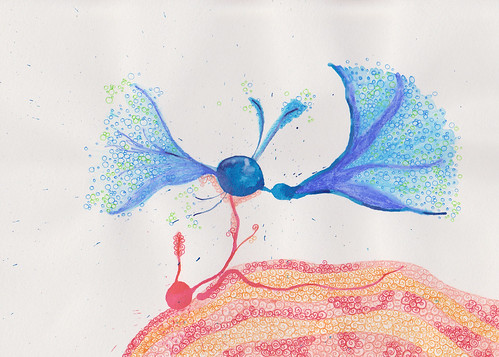This is a cute little animation a teacher made for his fifth grade students to get them interested in owls. I think its great! Enjoy:
Thursday, 11 November 2010
Sunday, 17 October 2010
work in progress...
Tuesday, 21 September 2010
Monday, 28 June 2010
Friday, 4 June 2010
Thursday, 27 May 2010
Enthomology
Why do swarming locusts grow giant brains?
Via io9, on an article from the Royal Society of Biological Sciences
During times of scarcity, locusts default to a solitary form, actively avoiding others of their species. However, when rain comes and plants bloom, the insects undergo a dramatic conversion.


What is 'bioluminescence'?
Via Wikipedia, and Ask Nature by the Biomimicry Institute
Bioluminescence is the production and emission of light by a living organism. Its name is a hybrid word, originating from the Greek bios for "living" and the Latin lumen "light". Bioluminescence is a naturally occurring form of chemiluminescence where energy is released by a chemical reaction in the form of light emission. Adenosine triphosphate (ATP) is involved in most instances. The chemical reaction can occur either inside or outside the cell.
"Before a short adult life as a gnat, larvae in the genus Arachnocampa spend months as carnivorous glowworms in caves or sheltered areas using light as a lure…a hungry New Zealand glowworm,Arachnocampa luminosa, lays a trap. From its nest on a cave ceiling, the glowworm dangles several dozen 'fishing lines,' each studded with evenly spaced, sticky droplets of mucus. The worm then churns out bioluminescence from organs on its posterior, attracting passing insects. These duped bugs get snagged in the gummy threads, and the glowworm hauls in its catch." (Hadhazy 2009)
Subscribe to:
Posts (Atom)





